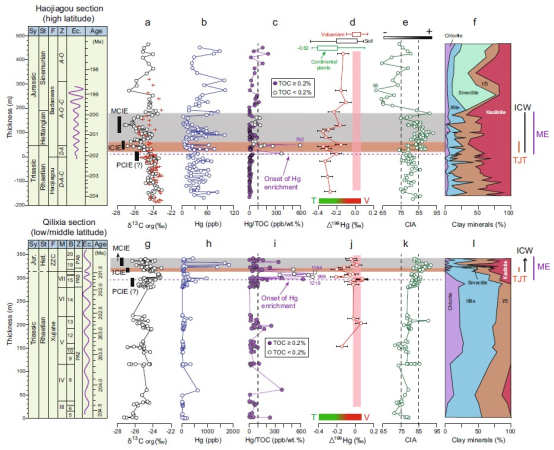Researcher SHEN Jun, Prof. YU Jianxin, Prof. FENG Qinglai, and Pro. XIE Shucheng from CUG, and Researcher WANG Yongdong and Dr. LI Liqin from Nanjing Institute of Geology and Palaeontology, Chinese Academy of Sciences, discovered that volcanism mainly results from continental chemical weathering and carbon-cycle perturbations. Their findings were published in Nature Communications. The abstract of the paper is as follows.
Direct evidence of intense chemical weathering induced by volcanism is rare in sedimentary successions. Here, we undertake a multiproxy analysis (including organic carbon isotopes, mercury (Hg) concentrations and isotopes, chemical index of alteration (CIA), and clay minerals) of two well-dated Triassic–Jurassic (T–J) boundary sections representing high- and low/middle-paleolatitude sites. Both sections show increasing CIA in association with Hg peaks near the T–J boundary. We interpret these results as reflecting volcanism-induced intensification of continental chemical weathering, which is also supported by negative mass-independent fractionation (MIF) of odd Hg isotopes. The interval of enhanced chemical weathering persisted for ~2 million years, which is consistent with carbon-cycle model results of the time needed to drawdown excess atmospheric CO2 following a carbon release event. Lastly, these data also demonstrate that high-latitude continental settings are more sensitive than low/middle-latitude sites to shifts in weathering intensity during climatic warming events.

Haojiagou, Junggar Basin, Xinjiang Autonomous Region

Xuanhan, Sichuan Province

Profiles of Haojiagou (Upper, HJG) and Qilixia (Lower, QLX) sections